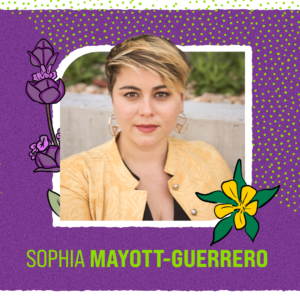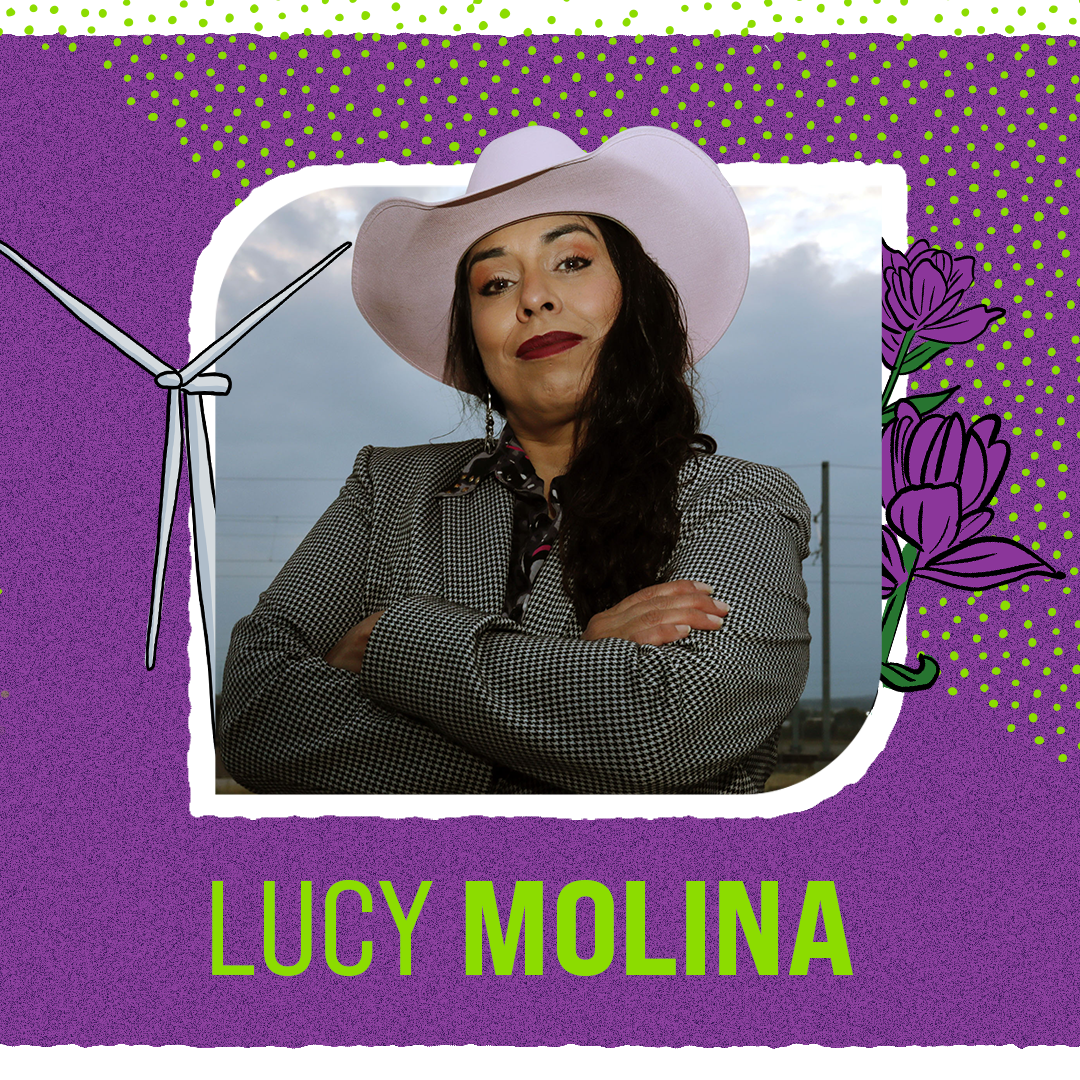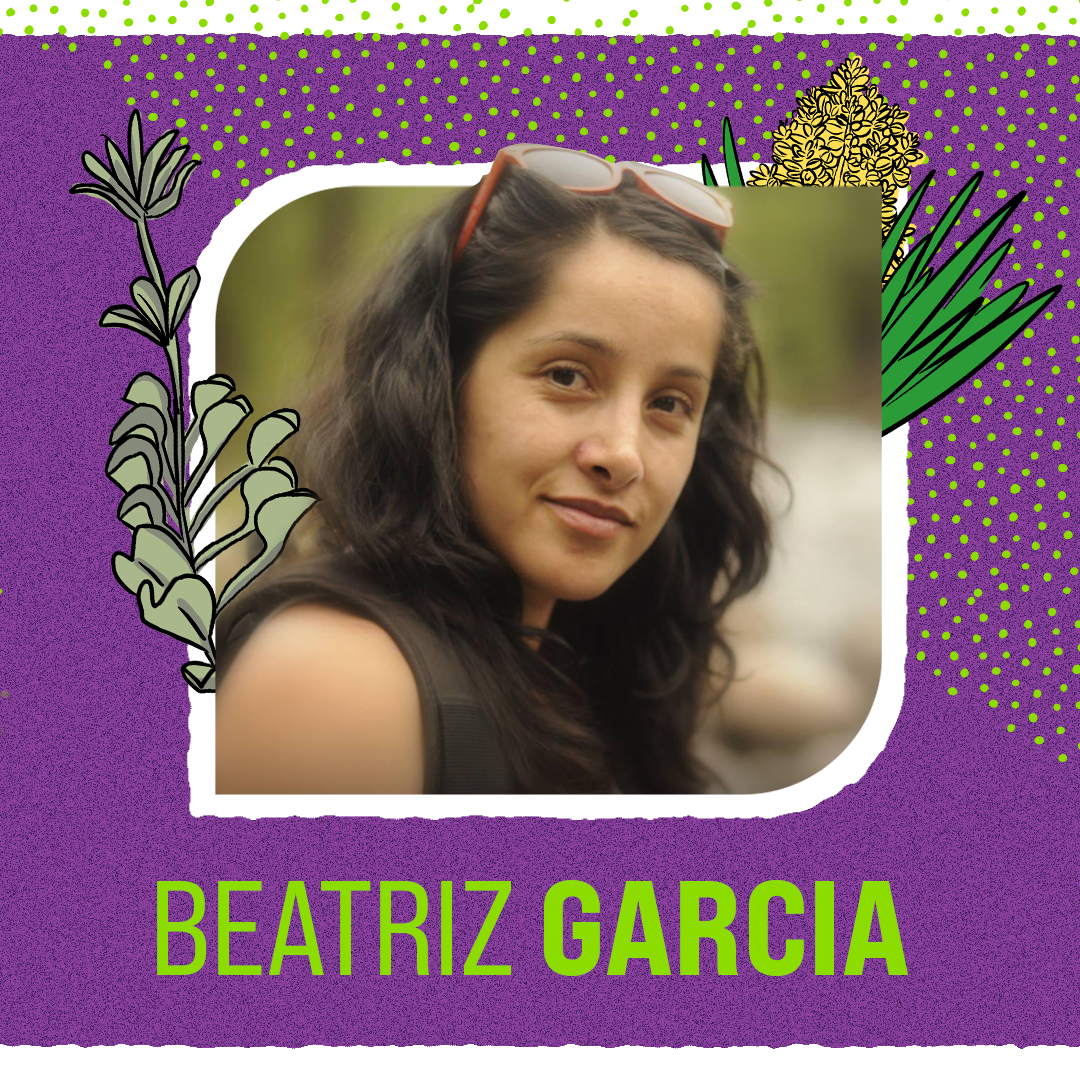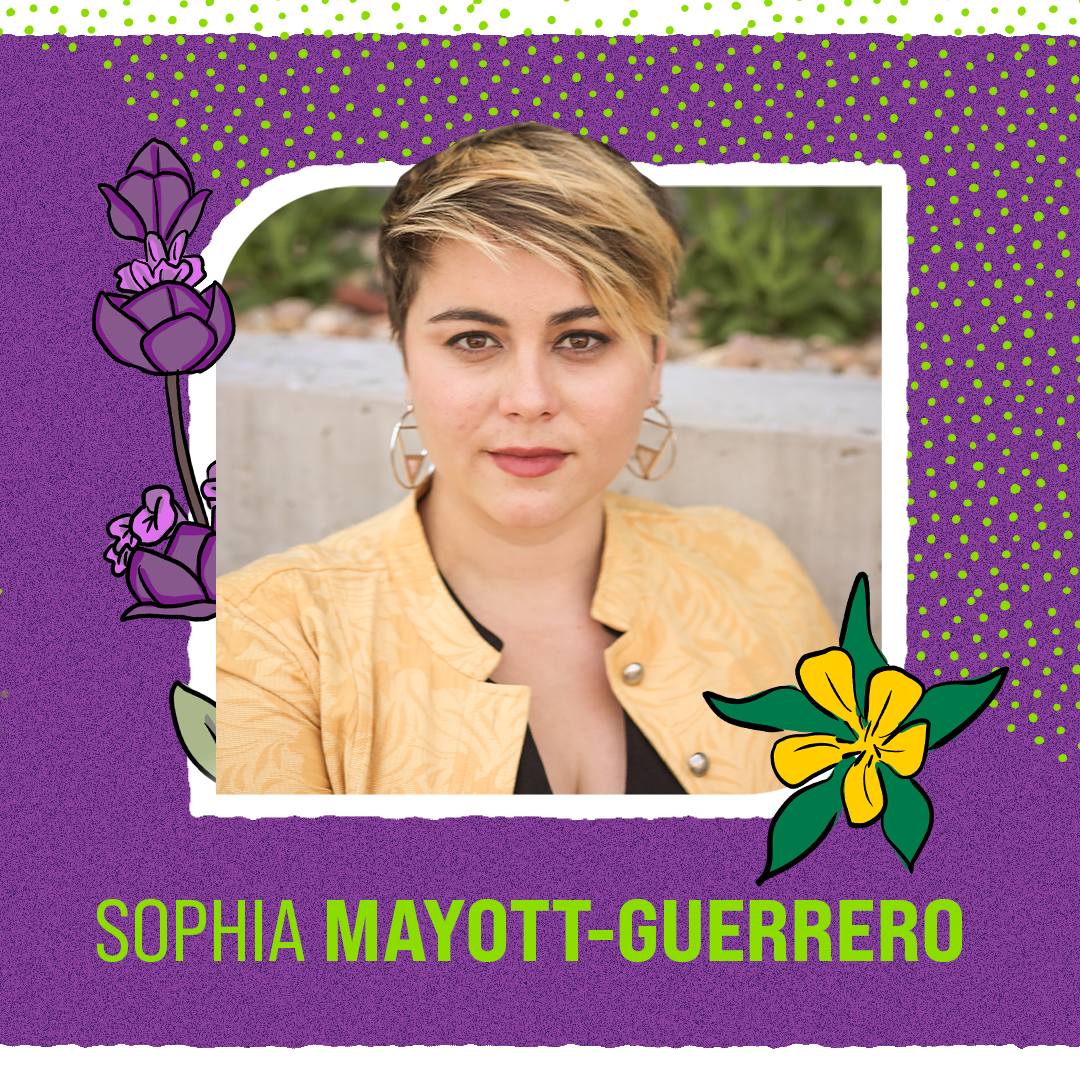“The areas where immigrant families are living often have deplorable resources, for example, mobile homes that do not offer a dignified life and that charge a very high price. The trailer parks have deplorable water. It comes out smelling horrible. It’s not water that you can wash yourself in. It’s contaminated. No one is helping to educate us about these topics of climate change and environmental problems. So, who do you speak with? Who can help this community have access to potable water?” – Beatriz Garcia
Beatriz’s story is part of our blog series in conjunction with the first-ever Colorado Latino Climate Justice Policy Handbook.
Historically, environmental policymakers have failed to fully understand the intersection of conservation policy and the unique issues impacting Latino communities across Colorado. Protégete created the policy handbook as a bilingual tool to help communities advocate for solutions that pave the way towards broader climate resilience. It will also help policymakers to better understand environmental inequities that Latino communities in Colorado are facing. It illustrates the historical context of environmental racism on Latino communities, provides innovative data, and presents a range of solutions to solve the most pressing environmental issues Latinos in Colorado are currently facing. This blog series delves deeper into the stories of community leaders who are experiencing and addressing many of the issues that the policy handbook details.
Read the rest of the stories!
Beatriz Garcia is a community organizer in Durango. As she’s gotten to know and work with immigrant communities in the rural southwest part of Colorado, she’s noticed that many of their struggles are tied to environmental injustices.
From distributing healthy food boxes during the pandemic to helping mobile home park residents form a cooperative, Beatriz shares how she’s learned to tackle social and environmental problems all at the same time.
Note: this interview was originally conducted in Spanish. Read the Spanish version here.
“The cost of living in this area basically takes away the opportunity for people to have access to a dignified home. “
In many ways, Durango is a very isolated area. There are around 300 nonprofit organizations in this area, which means there are many resources. But there are still many gaps for the population that I serve, since many of them are undocumented. So many of these resources don’t apply for them. The majority of immigrants are Spanish speakers from various places in Latin America, so many of them aren’t able to access resources simply because of language.
The main industry here is tourism. Many people work in hotels, in restaurants, in housekeeping, and in construction. In the outskirts of Durango, in towns like Montezuma, many people work in agriculture.
The cost of living in this area is very high. For this reason there are many people who work here and live in New Mexico and commute. It’s very difficult to survive in this area as middle class. You’re either above the line or below the line. The median sale price of homes in Durango is over $650,000. You can find a trailer in terrible conditions for no less than $20,000. A trailer in good conditions can be up to $100,000. And that’s a trailer. This basically takes away the opportunity for people to have access to a dignified home.
But these problems are often ignored in the community, because people in power and also political parties are very conservative. Their decisions have never included the Latinx or immigrant communities. Recently, there has been more of a consciousness of this problem of lack of representation, but also local leaders haven’t realized how much further we have to go. Even though there is a lot of support for things like language justice, in practice it has been super difficult to make these important changes.
“People in the community made very good nutritional decisions, they just didn’t have access to healthy food.”
I’m originally from Mexico, and my husband is from Telluride. We met in Argentina, when he was doing his PhD. Eventually we married and moved to Alamosa, Colorado, where we lived for seven years. That’s where I started my work with the immigrant community and saw the needs that existed here.
My environmental awareness began when I started working with Cooking Matters, which is a program of the Local Foods Coalition in Alamosa. The coalition was involved in an effort to create what is now called the Rio Grande Farm Park. Migrant farmers from the Guatemalan Mayan community in the San Luis Valley had been growing food in this plot of land to support their families after the recession, but developers wanted to convert the land into an RV park. There was this huge legal battle, and eventually the Food Coalition and the farmers won. The impact of having this land for the immigrant community has been amazing. They are using the Farm Park as a resource to help them eat healthier, access water, and connect with the environment.
When we moved to Durango, I continued my involvement with Cooking Matters. But just before I was about to do my first class, the pandemic hit. So we had to cancel everything. I started working with Compañeros: Four Corners Immigrant Resource Center as a Program Manager at a moment when we basically had no programs. So I had to innovate; I had to figure out what were the basic necessities.
We started to distribute food boxes to the majority-immigrant neighborhoods and from there we started to become aware of more and more problems. We started to receive a lot of foods that first of all were not culturally appropriate for the families. There were often things that weren’t healthy, extremely cheap, or didn’t have nutritional value. We did a survey and realized that people in the community made very good nutritional decisions, they just didn’t have access to healthy food. So we created partnerships with the Soup Kitchen and Food Coop so that they could access healthier food.
From there, we started to see more and more needs. From this arose two big projects. We started a tutoring program for children of immigrants, and we started working with the community at Westside Mobile Home Park.
“Residents of Westside were worried that they would lose their homes.”
Westside is a community of 58 trailers. About 75 percent of the population is Latina, with the other 25% being Native American or white.
The areas where these immigrant families are living often have deplorable resources, for example, mobile homes that do not offer a dignified life and that charge a very high price. When the pandemic hit, lots of people living there lost income. So they had to innovate to give their families a good life.
In December of 2021, residents of Westside received a notice that their park was going to be sold. People were worried that they would lose their homes. The owner had already received an offer from Harmony Communities, a corporation that owns dozens of mobile home parks across the West. Often when corporations buy these parks, they raise the lot rents by huge amounts. They don’t do the required repairs. People are either priced out or pushed into even worse living conditions. The residents didn’t know what to do. They didn’t know where to look for help.
When Compañeros learned of this, we found hope in a Colorado law passed in 2020 that requires owners of trailer parks to provide residents with a 90-day notice of their intent to sell and give the residents an opportunity to form a cooperative and make an offer to purchase the land. So Compañeros, community members, and other organizations started to raise funds so that the residents might be able to form a cooperative and buy their own park. We wanted to help make sure that, first off, the residents weren’t displaced, and second, that corporations didn’t take advantage of the sale.
In January 2022, residents formed the Westside Coop and begin working with Elevation Community Land Trust to purchase their own park. The community had never organized like this before; they’d put together parties and stuff but they had never really done anything formal for the benefit of the community. Many residents didn’t have a high school education. So it was difficult for them to visualize themselves making the changes they needed to write a proposal and all that.
Through this fight they started to create this notion of community, figuring out how they can actually solve the issues they have and how to speak for themselves. As an organizer, I didn’t want to be the representative of the community. I wanted them to actually represent the issues they have. My role is to help prepare them to do that. That was the big key. I knew what resources existed and how to create access to services and other organizations through partnerships. But we wanted to create this access through building power and leadership.
It was incredibly challenging. They had only a few months to raise $5.5 million. Their first offer was turned down because it depended on bank loans, and they had to put together a cash offer in only a week. Amazingly, they did it, and the owner accepted the offer. There is still a lot to figure out, but the transition is encouraging. They were able to decrease lot rents instead of raising them. There are many people that are now paying considerably less rent than they were paying before. Also, people are starting to do community projects. The girls, for example, are talking about making a club and a community space. So there is a lot of positive energy in the community.
“These are really environmental problems.”
Through this work, I have seen how many of the problems facing Westside and communities like it are really environmental problems.
For one, some of these families—entire neighborhoods and communities—had been moved to other places for really environmental reasons. I learned that there was once a lower-income community called Santa Rita on the south side of Durango near the dump, where most of the residents were Hispanic. In the 1960s, the Colorado Highway department purchased the land to construct a new route for US550 and told the residents they had to leave. Now, there’s a dog park on the land near a water treatment plant.
Many of the families from Santa Rita ended up moving to Westside Mobile Home Park. There’s one resident whose family lived in Santa Rita and is now suffering from cancer. We’re still trying to uncover all the consequences of the uranium mines in this area. Now it seems that they have removed all the waste, supposedly, there’s no knowledge of what it was that happened. There is a lack of documentation about the effects of health on the families that were living in this area.
Now, that legacy continues as it is still very difficult for the immigrant community to access health care. There are cultural and cost barriers. There are only two clinics that offer sliding scale services; the others are very expensive. For people who already have a health complication it’s very costly to go to the hospital. And if you aren’t able to go to a doctor early, then when cancer is detected it’s often already in an advanced stage.
“These mountains should not just be a tourist attraction.”
Another issue is transportation. For two years, the public transit route to Westside Mobile Home Park was suspended because of lack of funding. The city had done community meetings but they were all in English. So they didn’t receive any feedback from the Spanish-speaking community here and said, well, let’s get rid of their transit line.
I’ve heard stories of the impacts. I know a mom with twins whose husband was a truck driver, so he’d be away from town for many days at a time, and she was alone without a car. So she would walk with her twins at least two miles to buy groceries, and walk back with the groceries and the twins. I thought, something is wrong here. Finally this year, they got more funding and restored the route again. But this community went two years completely without access to transit.
There is no public transportation from the areas of Farmington and Aztec, New Mexico to this area, nor is there transportation from the area north of Durango into Durango. So it’s kind of sad, because if you don’t have a car, it’s difficult to go to places. For people with disabilities it’s even worse. There’s a lady who is undocumented who can’t walk, who has to transport herself alone when she has to go to the hospital. If you don’t have Medicare you can’t have access to this transportation for people with disabilities, so it’s a super huge barrier. She’s always asking for help. There are organizations that do this, but they are so busy, she is not a priority.
Finally, the other environmental question that gets to me is that we live in a place surrounded by mountains that no one from our Latinx communities has access to. People are completely busy working two to three jobs to survive with the high cost of living in this area. And also, these sports are not cheap. There are people who have literally never been hiking, who don’t have the opportunity to experience the natural wonder that is around them.
There are so many places where recreational activities can be done, but the question is how to make it possible for the community. This summer we’re partnering with organizations to educate families about how to go hiking, provide transportation and give them equipment that they need to go hiking by themselves. These mountains should not just be a tourist attraction—they should be accessible to the people who live here, too.
“When we can help the community come together, they can build power to speak out for themselves.”
No one is helping to educate us about these topics of climate change and environmental problems. We don’t know how to address these topics either. For example, the trailer parks have deplorable water, it comes out smelling horrible. It’s not water that you can wash yourself in. It’s contaminated. So, who do you speak with? Who can help this community have access to potable water?
I feel that there’s a very big gap that hasn’t been covered. In the community that I serve, environmental issues really aren’t talked about directly; and there aren’t accessible resources for our community to learn.
This is a problem, because the environment impacts us a lot. We have tremendous fear of the wildfires. We have realized that the emergency system doesn’t work for people who speak Spanish. People don’t know what to do. Something very simple, like including Spanish translation for the emergency systems, would have a great impact.
We have many problems with environmental injustice, but I also have hope that things will change. I saw working with Westside that when we can help the community come together, they can build power to speak out for themselves. And that can make a difference.












